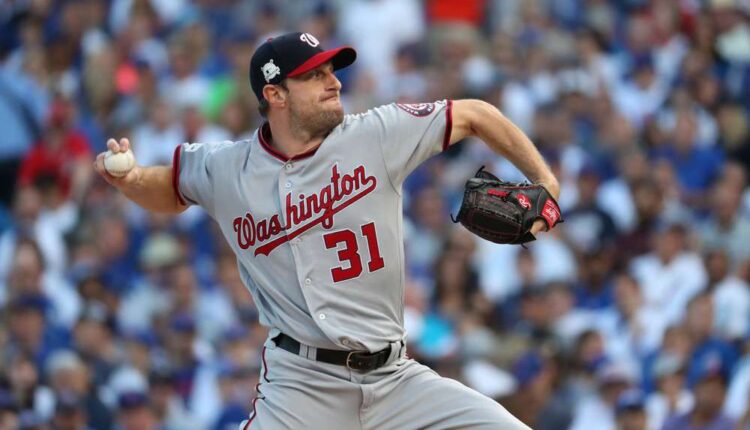
It’s been no secret that power is up in the Major Leagues. Home runs are at a record high, and whether you believe it’s the result of a juiced ball or just a mental shift in the way players approach the game, it’s up and likely to stay this way for a while. Of course, for power to be up, that means that something has to be down, and that something is most definitely pitching.
I can remember back in the earlier days of my fantasy baseball career, and the one true rule to live by was to wait on pitching. As a general rule that is still in place today, as pitching is very volatile. Throwing a baseball is a very unnatural movement for a human being to repeat time and time again, and with average velocity on the rise, we’ve also encountered many more pitching injuries. Of course, in the past this meant to not waste your valuable picks on a pitcher that has a higher chance of getting hurt. While that’s still kind of true today, ultimately getting that ace on your team can provide such a boost and payoff that it’s becoming more and more worth the risk.
Case in point: In the 2017 MLB season, there were only eight pitchers with an ERA under 3.00. That number was the same for 2016, though in 2015 it increased to 12 and then 22 in 2014. If we draw that number back to pitchers with an ERA under 4.00, the numbers go 29, 40, 54, and a whopping 66 in years 2017-14, respectively. ERA doesn’t tell the whole story about a pitcher’s performance, but in this case, it does a fine job of showing how pitching has changed over just the last few years. The list of pitchers who came in with an ERA under 3.00 in 2017 includes Corey Kluber (2.25), Clayton Kershaw (2.31), Max Scherzer (2.51), Stephen Strasburg (2.52), Robbie Ray (2.89), Chris Sale (2.90), Gio Gonzalez (2.96), and Luis Severino (2.98).
Looking at that crop of starters, I can reasonably say that up to six of these guys could repeat and do it again this coming season (I have my doubts about Gio Gonzalez and even Robby Ray). That means that if you’re one of the six teams in your league that owns one of these guys, you have an immediate advantage over the remaining 6-9 teams. This used to be the case when, say, you were the team that had Nelson Cruz in 2014 (he was the ONLY player to hit 40 home runs that season). Now, however, with four guys hitting over 40 homers and nearly every player hitting over 20 in 2017, the importance of grabbing a true power threat has lessened. And the need for an ace has increased.
2017 was the first year I stressed the importance of grabbing a pitcher within the first three to five rounds. I still wanted a top-flight offensive player in the first two (and remember, steady and consistent is better), but I no longer became queasy when using an early pick on a hurler. This year, it’s even more important because I think it’s about to get worse. I wouldn’t necessarily like taking a pitcher in the second round, but I don’t think it will hamper your team as much as it would in the past. I’ll still recommend taking one in the third round, but I think if you wait until the fifth, you’ve already fallen into the second-tier category of pitchers and will need to take a few more pitchers earlier on to round out your staff.
This is the first season that I’ve seen multiple instances of fantasy owners taking a different pitcher over Clayton Kershaw as the first pitcher off the board. That could be an acceptable choice if we’re talking about Max Scherzer or Corey Kluber, but Kershaw is still at the top of my pitching leaderboard. With that said, who are the guys that I think can take your team over the edge as far as pitching performance? That number actually dwindles down to five players. My top five starters include the aforementioned Kershaw, Kluber, and Scherzer, as well as Nationals righty Stephen Strasburg and Red Sox lefty Chris Sale. I’m still of a mind that Sale will implode thanks to the delivery and the taxing number of innings on his arm, so he’s at the bottom of this list, but I still would take him in the right situation.
If you land one of these five aces on draft day, your team will have an immediate advantage over the other squads in the league. You can then alter your draft strategy to include some risk-taking later on, and rest easy knowing that you have a true ace up your sleeve.
